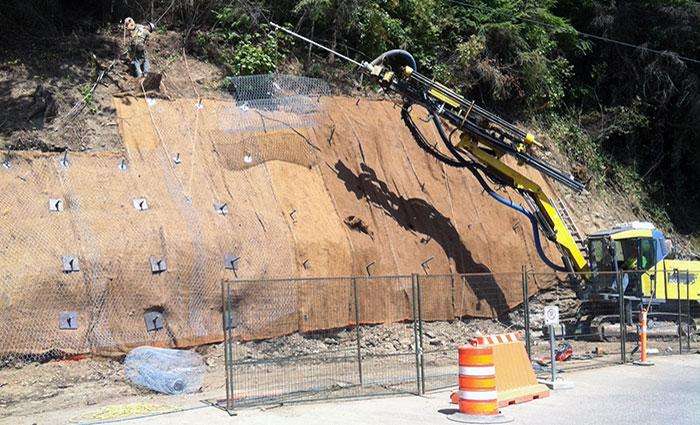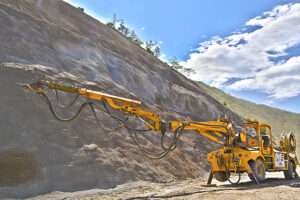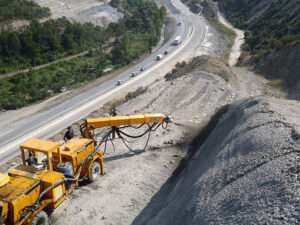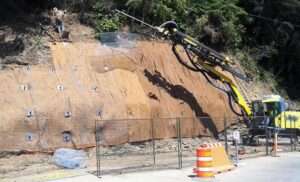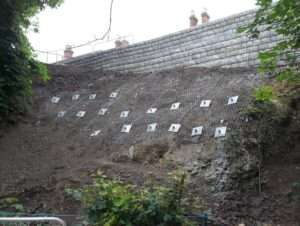In the world of geotechnical engineering, finding effective ways to stabilize slopes and reinforce rock faces is paramount. One technique that has proven itself time and again is the use of shotcrete as a protective coating. This article will explore the ins and outs of shotcrete, its benefits, and why it’s become the go-to solution for protecting and reinforcing slopes and rock faces.
What is Shotcrete?
Shotcrete is a type of concrete that’s pneumatically applied at high velocity onto a surface. The process involves mixing cement, aggregate, and water, then spraying the mixture through a hose using compressed air. This results in a dense, durable layer of concrete that adheres tightly to the substrate.
How is Shotcrete Used for Slope and Rock Reinforcement?
Shotcrete plays a dual role in slope and rock reinforcement. Firstly, it acts as a protective coating, shielding the underlying rock or soil from erosion and weathering. Secondly, when reinforced with fibers or mesh, shotcrete adds structural strength, helping to prevent rockfalls and slope failures.
The process of applying shotcrete typically involves the following steps:
- Preparation: The rock face or slope is cleaned and prepared to ensure a strong bond between the shotcrete and the substrate.
- Application: The shotcrete mixture is pneumatically applied to the surface, building up a layer of the desired thickness.
- Reinforcement: If required, reinforcing mesh or fibers are embedded into the wet shotcrete to add additional strength.
- Finishing: The shotcrete is finished to the desired texture and appearance.
Why is Shotcrete So Effective?
Shotcrete offers several advantages that make it an ideal choice for slope and rock reinforcement. These include:
- High Strength: Shotcrete can achieve compressive strengths of over 10,000 psi, making it a highly durable protective coating.
- Adhesion: The high-velocity application process ensures a strong bond between the shotcrete and the substrate, resisting delamination.
- Flexibility: Shotcrete can be applied to complex geometries and irregular surfaces with ease.
- Speed: The shotcrete process allows for rapid application, minimizing project timelines.
- Cost-Effectiveness: Compared to other reinforcement methods, shotcrete is often more economical.
Real-World Applications of Shotcrete
Shotcrete is used in a vast array of applications where slope and rock stability are critical. These include:
- Highway and Railway Cut Slopes: Shotcrete helps prevent rockfalls and landslides that could impact traffic.
- Tunnels and Underground Structures: It provides a durable lining for tunnel walls and ceilings.
- Dam and Levee Faces: Shotcrete helps protect and reinforce the concrete and rock faces of critical water infrastructure.
- Mining and Excavation: It’s used to stabilize rock faces and prevent failures in mining and excavation applications.
Challenges and Considerations
While shotcrete is a powerful tool, it’s not without its challenges. These include:
- Quality Control: Ensuring consistent mix quality and application technique is critical for achieving optimal results.
- Environmental Factors: Weather conditions, substrate properties, and drainage all impact the performance of shotcrete.
- Durability: While highly durable, shotcrete is not immune to degradation over time and requires regular inspection and maintenance.
Conclusion
Shotcrete has proven itself as a highly effective technique for protecting and reinforcing slopes and rock faces. Its unique combination of high strength, strong adhesion, and rapid application make it a go-to solution for geotechnical engineers and contractors. As the demands of infrastructure projects continue to grow, the role of shotcrete in ensuring slope and rock stability will only become more crucial.


